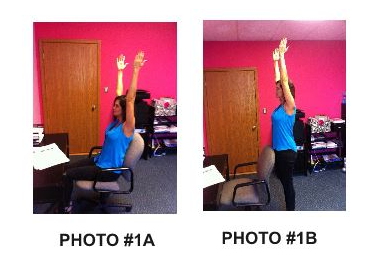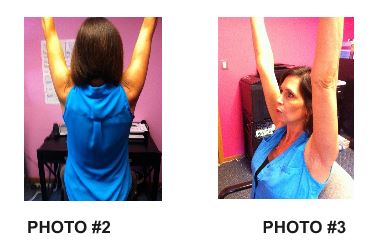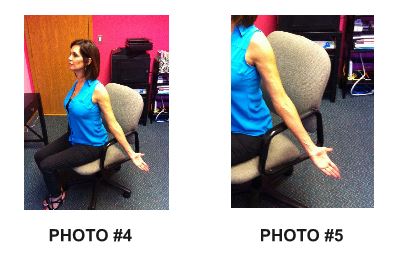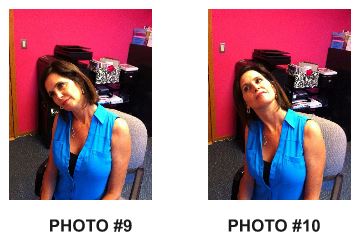Before starting CardioServ, an Accreditation Consulting business in 2007, I used to scan full-time in adult and pediatric echo. I too, like most other techs, had constant and nagging neck pain. Once I stopped the daily scanning and my neck pain eased up, it was out of sight out of mind. My days became consumed with consulting and teaching instead of scanning so I no longer exposed myself to repetitive stress injuries that many sonographers face.main
In 2010 the Intersocietal Accreditation Commission added a new requirement that all accredited labs must have a policy in place to address technical staff safety, comfort and avoidance of work related musculoskeletal disorders (MSD). (Standard 4.1.1A) We responded to this new standard by writing policies requiring annual review of ergonomic safety and we used the resources that IAC had provided to build a policy. We made sure all of our clients reviewed the ergonomics safety guidelines once a year. So far, so good! To tell you the truth I hadn’t really thought about musculoskeletal disorders (MSD) since implementing new policies back in 2010 until earlier this year.
I had just completed an annual meeting at a hospital and we discussed the usual recommendations on ergonomics and tips on avoiding work related MSD recommendations. The sonographers were offered the opportunity to discuss any needs. Very little was said, a request for a chair without wheels was the only mention of any needs… check….another meeting completed.
A few weeks later at the end of my weekly standing meeting with the technical director of this same hospital she casually mentioned she had to leave early to go see a chiropractor because her neck was killing her! “What?! We just had a meeting a few weeks ago and you didn’t mention anything! Does your director know?” She responded that it’s “normal for echo techs to have neck pain”. She hadn’t told her director or even considered this being a workman’s comp case. It’s just par for the course!
It was at that very moment that I had a complete paradigm shift in thinking. Since the 2010 IAC mandate for MSD training I had focused on how to decrease the risk of injury but ignored the PAIN FACTOR! Sure, we can discuss beds and chairs that move, decreasing hand grip pressure, minimizing awkward positions, etc. but we were ignoring the elephant in the room. Most sonographers scan in pain! How do we provide pain relief? It was time to start discussing sonographer pain and more importantly offering tools and strategies to help with the actual pain.
I didn’t know exactly what to do with my new epiphany and how to change the conversation on ergonomics to include managing and preventing sonographer pain. Then in October, during Medical Ultrasound Awareness Month we were looking for ideas to post on our website for sonographers and fell upon Doug and Mark’s articles on Aunt Minnie! WOW! There was actually someone already out there who understood exactly what sonographer pain was because they had experienced it firsthand. Sonographers teaching sonographers…loved it! Recently, we’ve connected with Doug and Mark and asked for some advice along with exercises that sonographers can do every day, sitting or standing, at work or at home to reduce those pains and discomfort. They were kind enough to provide us with this article:
Chronic tightness in the shoulders and neck, pain that radiates through the neck and shoulders, reduced range of motion and that stereotypical “office worker hunch” are the great plagues of modern life. The situation is made worse because of the American mentality of work, “to get ahead we need to do more”! We get caught up in the old “push me – pull me” situation and end up like the animal in the Dr. Doolittle movie, not sure if we’re coming or going!
We want to get ahead at work, so we spend more time at our desk, work to get in one more client and push to do more and more. But if we spend too much time working away in the head forward, shoulders rolled, hips tucked under position, we risk repetitive use injuries that will start taking a greater and greater toll on our bodies, our health and wellness and our performance levels — and we will end up doing less but taking more energy to do it. We work harder to become less effective and efficient!
Very few of us feel we can afford to slow down or take time off. (Interesting to look at other countries and their model of time off, recovery and ways of refreshing the body – but that’s for another blog!) Most of us don’t have massage therapists sitting behind us at work or waiting in a side office so we can slip in for a quick 10 minute massage. We don’t have a trainer or therapist waiting for us on break to do some corrective treatment throughout the day, either.
So what’s the solution?!
In most of our situations it’s taking matters into your own hands! The DO IT YOURSELF APPROACH! Ready for some good news? You can do it, and it only takes a few minutes, a few times a day to start to LIVE PAIN FREE!
The follow are three simple exercises that can be done separately, or combined in a bundle or group. Done as a single exercise, you can do the movement in less than a minute, if you do all three you can do them in under five minutes. Another huge benefit – you can do these sitting at a desk or standing behind your chair – and you won’t break into a sweat and have to run to the restroom to prep yourself to get back to work!
Sitting at your desk, or standing behind your chair, take both arms and reach overhead as high as possible, with palms facing in and thumbs pointing behind you. (Photo #1A and #1B)

Now here is the tricky part – AS YOU EXTEND YOUR ARMS OVERHEAD, PUSH YOUR SHOULDERS BACK (think pinching a pencil between your shoulder blades) (Photo #2)

Now keep reaching as high as you can while at the same BLOW YOUR BREATH OUT – as if you are blowing out a huge candle, actually 5 huge candles (Photo #3). Inhale through your noses and exhale out your mouth.
This should open up your chest, allowing you to breathe easier while at the same time relieving stress and strain from your neck and shoulders.
Again, sitting at your desk, or standing behind your chair, take both arms and extend them down by your side (Photo #4)

This time, open the palms to the outside, rotating the hands so the thumb is again pointing behind you. (Photo #5).
Again, pinch the shoulders back (think of pinching that pencil between the shoulder blades!) and sit or stand as tall as possible. (Photo #6).

Now keep reaching back as far as you can while at the same time BLOWING OUT THOSE FIVE HUGE CANDLES! Inhale through your noses and exhale out your mouth.
This is another great movement to open your chest and allow you to breathe easier while at the same relieving stress and strain from your neck and shoulders.
In a seated or standing position, simply make yourself as tall as possible. With this movement think that someone is taking you by the hair and pulling straight up. (Photo #7)
At the same time, push the shoulders down and back – PINCH THAT PENCIL! (Photo #8)

Slowly, tilt your head toward the top of your shoulder. Think that you are placing your ear on the top of your shoulder. (Photo #9)

Now, slowly and gently, rotate your head, working to bring your chin up, toward the ceiling, while still trying to keep your ear on your shoulder. (Photo #10)
Make sure to do both right and left side to use this movement to get great neck relief and release tension in the muscles in the upper neck/shoulder area.
You can do these movements 2-3 times a day, doing each one, two or three times at a setting (workout!) or any time you start to feel tension build up as you build up your workload throughout the day! Be sure to check out more of Doug and Mark’s articles on Aunt Minnie. Their most recent series Living Pain Free is on how sonographers can reduce or eliminate back pain.




Nov
2016
Nov
2016
Nov
2016
Mar
2018
Oct
2019